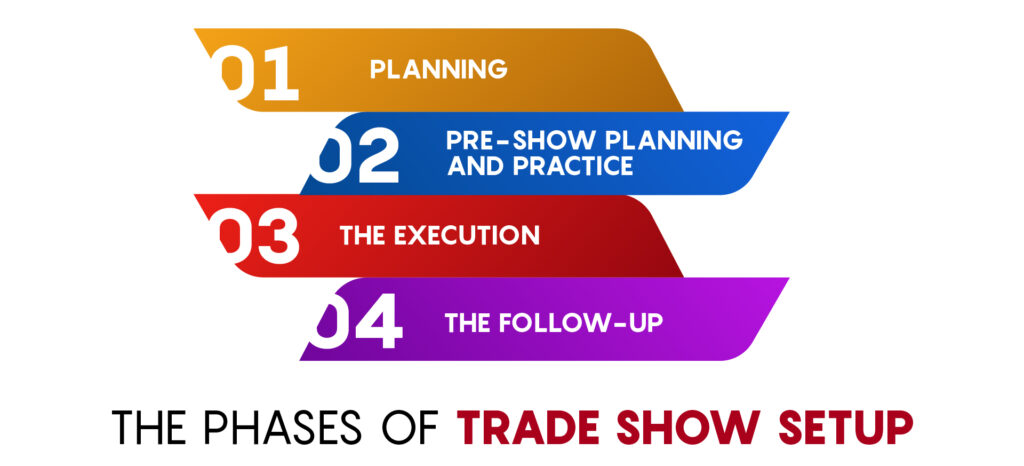What Is A Trade Show?
A trade show is similar to a convention in some ways but it can stand as an entity of its own. The most widely accepted definition of a trade show is that it is an exhibition where companies gather to showcase their products and services. The difference here, between a trade show and an expo, is the audience limitations. Trade shows are generally not open to the public. Instead, it is limited and restricted to only those who register to attend, such as company representatives, members of the press and some select group of consumers. This type of limitation of attendees helps promote a constructive conversation between companies, competitors, buyers, investors and consumers alike.
The Tie-In: Trade Shows, Expos and Conventions
Exploring the other end of the spectrum, let us have a look at conventions. Conventions are similar to trade shows and expos, in that, they are large scale gatherings. The difference here is that often it is merely a gathering of like-minded people who are looking to connect and network with others who share similar interests. A good example of this is Comic-Con where comic book enthusiasts gather to dress-up, talk about and take part in activities relating to their favourite comic-book publication.
Now that you have an idea of what trade shows and conventions are, how exactly does the expo fit into the picture? An expo or exposition is simply a large-scale trade show that is open to the general public and often conducted on an international scale. Think of it as a hybrid of a convention and a trade show. It has all the company and sales networking elements of a trade show with all the conferences, seminars and idea-sharing of a convention.
‘‘
Trade shows are an ideal place to build brand awareness, especially within one's industry given that the majority of the attendees will be top industry professionals and members of the press.

Why is it important even in an ever-digitising world?
Builds Brand Awareness
Trade shows are an ideal place to build brand awareness, especially within one’s industry given that the majority of the attendees will be top industry professionals and members of the press. Having face-to-face interaction with such a niche audience will help widen your brand’s reach in future endeavours.
Targeted Leads
The aim of a trade show is to sell, and that is exactly what you can do here. It is a well-known fact that human interactions have far greater results in terms of recollection and relationship-building when done face-to-face. Giving these niche attendees the opportunity to interact with the type of product or service you will be providing is a great confidence booster for any potential buyers or investors. By building these connections, you increase the chances of a successful follow-up, which brings us to the next point.
Closing the deal
Given that it is such a limited list of attendees, if you plan your targeted marketing strategy right, you can easily identify and close the deal with industry leaders that you wish to align your brand with.
An Opportunity to Study the Competition
Think of it as one big spy-game, all the top players are at the trade show to study each other and maximise their marketing and networking efforts. You should do the same. Take a stroll around the floor, casually engage in conversation with competing businesses, get them to tell you about their pricing strategies, marketing plans and so on. Compare this information to what you already know about the industry, do a cross-analysis and find out what is working and what is not. If you can identify a weak point that can be used to your advantage then it will put you ahead of the competition.
The Ideal Networking Space
All the selling, scheming and analysis aside, at the heart of a trade show is the intent to network with like-minded industry professionals that will not only help foster long-lasting relationships but help you as a business owner gain the lay of the land. It is a great opportunity to gain some very valuable industry insights.
The Benefits and Risks of Tradeshows Going Forward
The Benefits
It costs less to close a sale at a trade show than it does in any other external way. Think about it, at trade shows you have industry titans who are actively looking to purchase and invest in businesses, it is ideal. However, in the day-to-day marketing grind, a company will easily spend twice what they spent on a trade show booth to invest countless hours of labour and cold-calls trying to get potential buyers on board.
The other advantage – there is a trade show for nearly every industry or business. If you Google trade show alongside your industry name, there is a fair to a good chance you will find an event for it.
Having said that, it is a risky time to be meeting in large crowds given the state of the world and the looming presence of the pandemic. However, given that you take the appropriate safety measures it is clear that these events have a lot of value to contribute towards the growth of your business.
The Risks
The pandemic poses the largest risk currently. Despite vaccines coming into play, there is still a significant risk there.
Apart from that, the majority of the risks rear their heads in the planning and funding stages:
- Trade shows are time-consuming and often require more than a day or two to successfully complete.
- If it is a travelling trade show the cost can be significantly higher in terms of moving, setting up, accommodations and so on.
- If you do not do your research you will have a hard time navigating the immense amount of competition that will be present at the trade shows, thereby dragging down the productivity of your outreach efforts.
‘‘
Trade shows are time-consuming and often require more than a day or two to successfully complete.

Setting Up Trade Shows
Phase 1: Planning
- Gather Data– If you attended past shows or know of past shows, reach out to the attendees and do a survey, analyse sales leads, the cost they faced and the overall success.
- Work Your Budget – Prepare to spend a decent amount on renting a space, booth design, promotional giveaways, advertising, salary compensation, accommodations, meals, travel and so on.
- Run a Cost-Benefit Analysis – Look at the expenses you might incur and weigh it against the benefits of possibly succeeding in meeting your goal to see if this endeavour is worth doing.
- Set a Timeframe – The initial setup itself takes days if not weeks, set a timeframe that accounts for this and helps maximise your floor time.
- Research Your Audience – Understand your audience to craft a specialise marketing plan that is guaranteed to make its mark at the show. Look into demographics, economic backgrounds, lifestyles and so on.
Phase 2: Pre-Show Planning
- Practice the Pitch – Run your employees through drills for best and worst-case scenarios that will help them think on the spot. This will improve the customer experience on D-Day.
- Advertise – Use whatever tools you have to advertise across the industry. Social media is a good option as is Google AdWords where you can target specific target audiences.
- Outsource – It is possible that your business may not have the bandwidth to handle a large-scale task like a trade show if you are a start-up. If that is the case then outsourcing is the next best option. Find an agency that can work within your set budget and that it has a reputable standing in the industry.
Phase 3: The Actual Show
- Make a Good First Impression – The booth will do most of the work, so make it inviting and eye-catching. Use different media such as video, audio explainers, pamphlets and so on to make it a comprehensive experience upon first glance.
- Build a Relationship –At a trade show, you are the face of the company, so make it count. Be warm and inviting, encourage them to ask a lot of questions and try to genuinely get to know them. This sets the base for a strong relationship with a higher likelihood of a sale down the road.
- Give Them a Show – Take Elon Musk and one of his recent shows where he did a live demonstration of Tesla’s Cybertruck. Regardless of the fact that it faltered a little the aim of making it memorable was achieved. A live demonstration creates buzz and gets people excited about your product or service.
Phase 4: Follow-up
- Be Fast – Do not waste any time after meeting your potential buyer/investor. Follow-up with them and engage before your competition has the chance to do the same. Follow them on social media, write them an email, and try to close the deal with a hard-sell phone call to make the most of the freshly forged relationship.
- Internal Audit – Take a look at how your team performed after the show, and see how many leads they got, how many of those were successful prospects and where it fell short. This will give you an idea of what needs improving for the next show.
Check out our article on expos to see how you can explore different and larger avenues for growing your business network.




